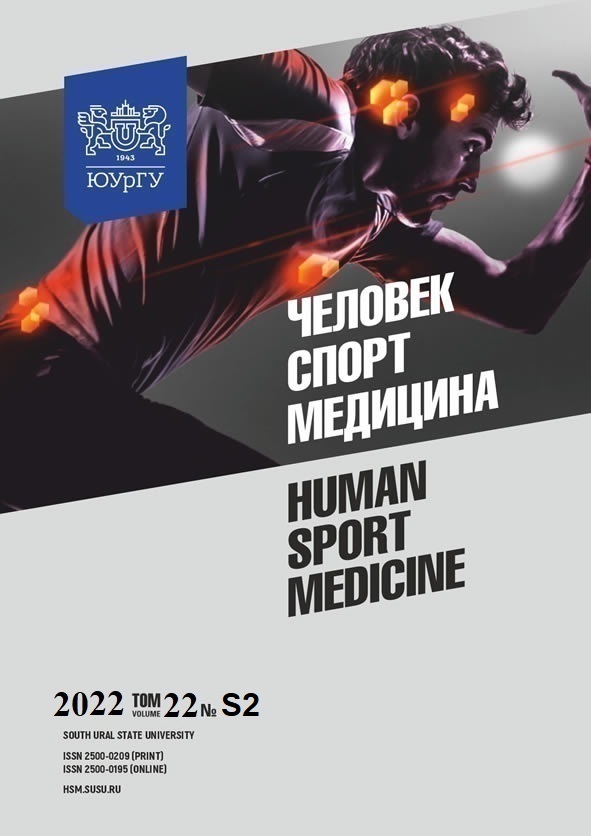SYSTEM ORGANIZATION OF PHYSIOLOGICAL FUNCTIONS THAT PROVIDES MAXIMUM PHYSICAL PERFORMANCE
Abstract
Aim: the paper is aimed at identifying the “early” variability of HR stress test by means of mathematical modeling and, thus, establishing the relationship between the tolerance of physical activity (PA) and related features of the system organization of physiological functions (SOPF). Materials and methods. This pilot study involved 28 apparently healthy subjects aged from 18 to 22 years. Bicycle ergometer test was performed according to an individual ramp protocol. Sequential RR-intervals (CI) were isolated from the electrocardiogram. The data obtained at exercise and rest were provided as linear mathematical models. Cardiac rhythm data were modeled before (30 seconds) and just after (30 seconds) the beginning of the bicycle ergometer test at 50 W. A comprehensive gas analysis (Quark) was carried out throughout the test. Results. Pre-exercise data of a mixed and limited sample cannot be predictors of maximum PA tolerance, however, the data obtained predict quite accurately the baseline potential of the body. The correspondence between a lower pre-exercise/exercise HR with a lower recovery rate can be explained by a higher PA maximum. At the same time, the correspondence was found between a lower rate of increase in HR at the beginning of the test and a lower rate of recovery. A larger CI and the rate of variability of the 1st stage cardiac rhythm data correspond to a larger exercise maximum. A higher PA maximum is associated with a shorter CI recovery. The later involvement of anaerobic energy supply is associated with both a greater exercise tolerance and a prevailing rate of recovery. Conclusion. The data obtained reflect the dynamics of PA tolerance and related energy mechanisms.
References
References on translit
Copyright (c) 2022 Human. Sport. Medicine

This work is licensed under a Creative Commons Attribution-NonCommercial-NoDerivatives 4.0 International License.















